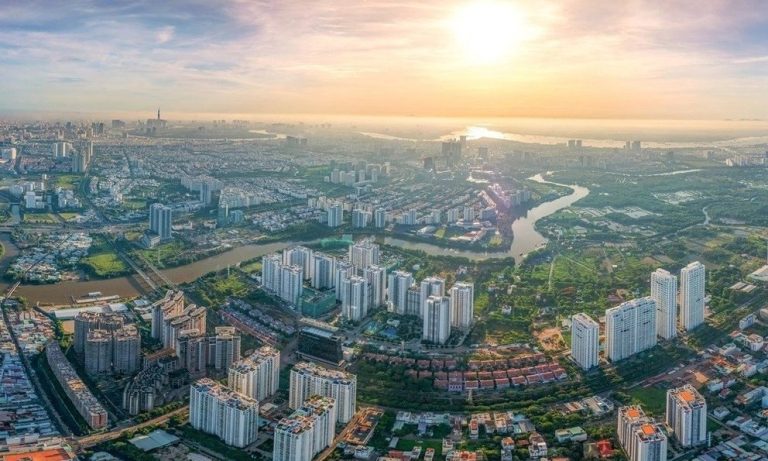The Ministry of Transport today opened the Cai Mep Thi Vai International Port in the southern province of Ba Ria Vung Tau, the country’s deepest and biggest seaport, which designed to meet the increasing demand of container shipping in the South.
The VND13 trillion (US$619 million) project, funded by ODA loan of Jica and counterpart budget of Vietnam government, will also open direct shipping channels with other domestic and international ports worldwide, cutting the intermediate and transit shipping costs“. The project will also help increase the social economic development of Ba Ria Vung Tau in particular and the southern region in general while save other ports in the South from overload burdens.” said deputy prime minister Hoang Trung Hai. Hai said the port, which marks 40th years of relationship between Vietnam and Japan, will also play as a shipping hub connecting countries in the Mekong region. He told the port’s management board to fully ultilise the ports and operate the ports with safety. According to transport vice minister Nguyen Van Cong, with direct channels and access roads, the ports will play an important role in attracting foreign direct investment (FDI) to the region as well as international maritime forwarders from the USA, Denmark, Singapore, Japan and Hong Kong”. Cong said the project built an international gateway which is capable of Vietnamese exports directly to Europe and North America ports without the need to stop at international transit terminals in the region.“This shall enhance the competitiveness of Vietnam exports while consolidating the postion of Vietnam in the world maritime transport” Cong added. The project, managed by Ministry of Transport’s Project Management Unit 85 (PMU85), consists of seven contract packages including four civil work packages, two equipment procurement packages and one supervision consulting service package. Approved by the government in 2004, the project was completed with the participation of a number of Japan contractors include Toa-Toyo, Penta-Rinkai, Penta-Toyo, IHI-MES and two domestic contractors include Cienco6-Truong Son and Maritime Safety Corporation. In addition, Japanese JPC-Nippon Koei was the major supervisor of the project. According to the Vietnam Port Association (VPA), Vietnam has 30 ports with 166 harbors and 350 wharfs. Of these, only some that were rendered operational after 2006 are equipped with state-of-the-art loading and unloading facilities. This shortage has reduced loading capacity in Vietnam to only 50 percent compared to advanced ports in other countries in the Asian region. Vietnamese logistics industry has attracted a number of foreign investors and there are currently close to 1,000 companies that have established in the country. Meanwhile, Vietnamese companies are only able to supply simple logistic services. About 70 percent of the market share is captured by foreign companies; hence logistic services contribute little to the country’s GDP. The association says that Vietnamese logistic services have not yet fulfilled their potential. More than 90 percent of imported and exported commodities are transported via the sea and it is predicted that around 600 million tonnes of goods will be transported this way by 2015 and around 1,100 million tonnes by 2020.Total container-handling capacity through ports is as much as 15.2 million twenty-foot equivalent units (TEU) as of 2015, and 29.2 million TEU as of 2020.
Source: VNA




